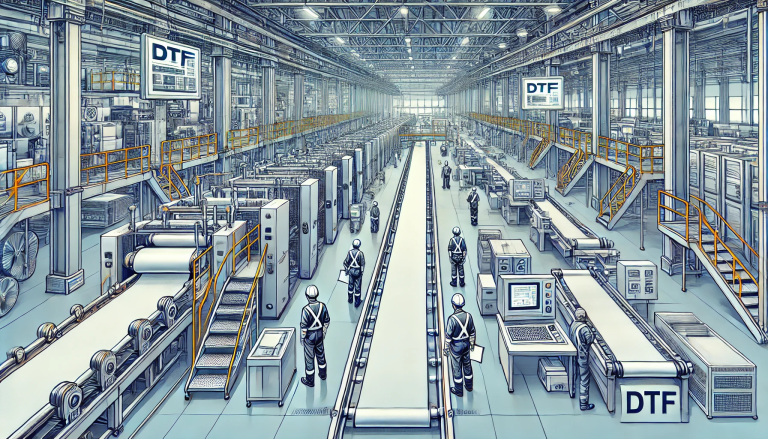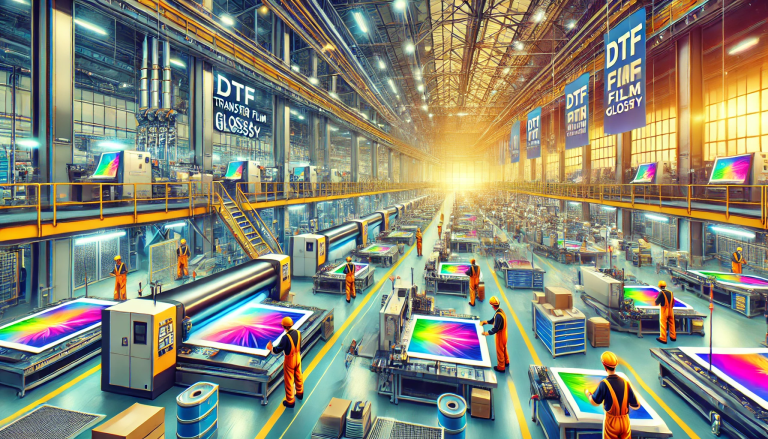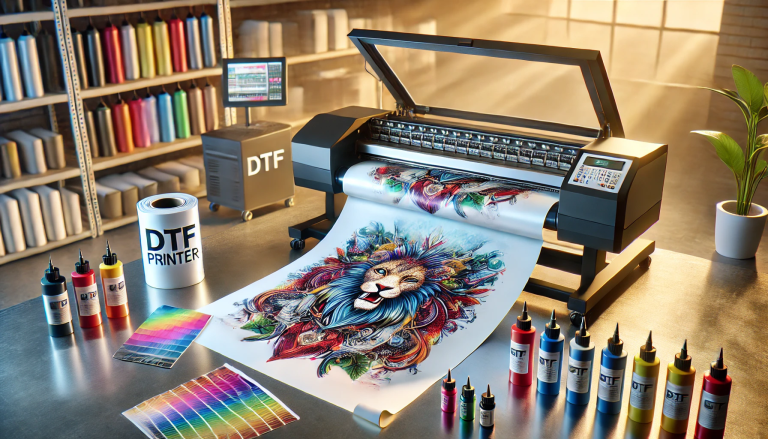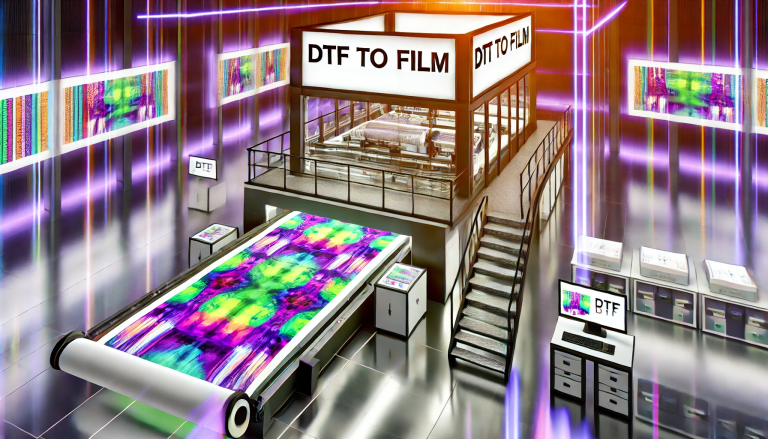“Transfer Your Designs with Ease – Is DTF Digital Transfer Paper Vinyl!” -MAXDTF- DTF Foil Manufacturer, DTF Film Sheet Supplier, Made in China
What Is DTF Digital Transfer Paper?
DTF digital transfer paper is a specialized material used in the DTF printing process. It serves as the carrier for the printed design, which is then transferred onto various substrates like t-shirts, hoodies, and tote bags. The transfer paper is coated with an adhesive layer that allows the ink to adhere to the surface of the material during the transfer process.
DTF digital transfer paper is designed to work seamlessly with DTF printers and ink systems, enabling users to produce vibrant, full-color designs with ease. The process involves printing the design onto the transfer paper, adding a layer of adhesive powder, and then transferring the design to the desired substrate using a heat press or an automatic transfer machine.
What Is Vinyl?
Vinyl, on the other hand, is a type of adhesive material used in vinyl cutting and heat transfer vinyl (HTV) applications. Vinyl is typically cut using a vinyl cutter or plotter to create custom shapes and designs, which are then applied to various surfaces using a heat press. HTV is particularly popular for creating detailed, one-color designs on fabrics, such as t-shirts and hats.
Vinyl comes in a wide range of colors, finishes, and textures, making it a versatile material for personalizing items. However, it is limited to single-color designs and requires manual cutting, which can be time-consuming for complex projects.
Key Differences Between DTF Transfer Paper and Vinyl
While both DTF transfer paper and vinyl are used for customizing garments and promotional products, they differ significantly in terms of application, versatility, and final results. Here are the key distinctions:
1. Application Process
- DTF Transfer Paper: Involves printing a design onto the transfer paper using a DTF printer, applying adhesive powder, and transferring the design to the substrate. This process allows for full-color, photo-realistic designs with excellent color reproduction.
- Vinyl: Involves cutting a design from colored vinyl using a cutter or plotter and transferring it to the substrate using a heat press. Vinyl is limited to single-color designs and requires manual cutting for intricate patterns.
2. Color Capabilities
- DTF Transfer Paper: Enables the creation of vibrant, multi-color designs with intricate details, making it ideal for complex graphics, photos, and gradients.
- Vinyl: Limited to single-color designs, although layered vinyl can be used to create multi-colored effects. However, this approach is more time-consuming and less versatile than DTF printing.
3. Durability
- DTF Transfer Paper: Provides durable, long-lasting transfers that maintain their color and vibrancy even after multiple washes. The adhesive layer ensures strong bonding with the substrate.
- Vinyl: Also offers durability, but the bonding depends on the quality of the vinyl and the application process. Some vinyls may peel or crack over time, especially with frequent washing.
4. Suitability for Substrates
- DTF Transfer Paper: Suitable for a wide range of substrates, including cotton, polyester, and blends. It performs well on both light and dark fabrics.
- Vinyl: Best suited for fabrics like cotton and polyester, but may not adhere as well to certain synthetic materials or glossy surfaces.
5. Ease of Use
- DTF Transfer Paper: Requires a DTF printer, which simplifies the printing process and eliminates the need for manual cutting. It is ideal for users looking for an automated, high-quality solution.
- Vinyl: Requires a vinyl cutter or plotter for cutting designs and a heat press for application. This method is more labor-intensive and best suited for simple, one-color designs.
Which Should You Choose?
The choice between DTF digital transfer paper and vinyl depends on your specific needs and project requirements:
- Choose DTF Transfer Paper if:
- You want to create full-color, photo-realistic designs.
- You need a versatile solution for a variety of substrates.
- You prefer a streamlined, automated printing process.
- Choose Vinyl if:
- You primarily work with simple, one-color designs.
- You already own a vinyl cutter or plotter and heat press.
- You need a cost-effective solution for small-scale projects.
Conclusion
DTF digital transfer paper and vinyl are both valuable materials in the printing industry, but they serve different purposes and offer distinct advantages. While vinyl is ideal for simple, one-color designs and requires manual cutting, DTF transfer paper excels in producing vibrant, multi-color designs with minimal effort. Understanding the differences between the two will help you make the right choice for your projects and ensure you achieve the best possible results. Whether you opt for the versatility of DTF printing or the simplicity of vinyl, both materials offer exciting possibilities for customizing garments and promotional products.

